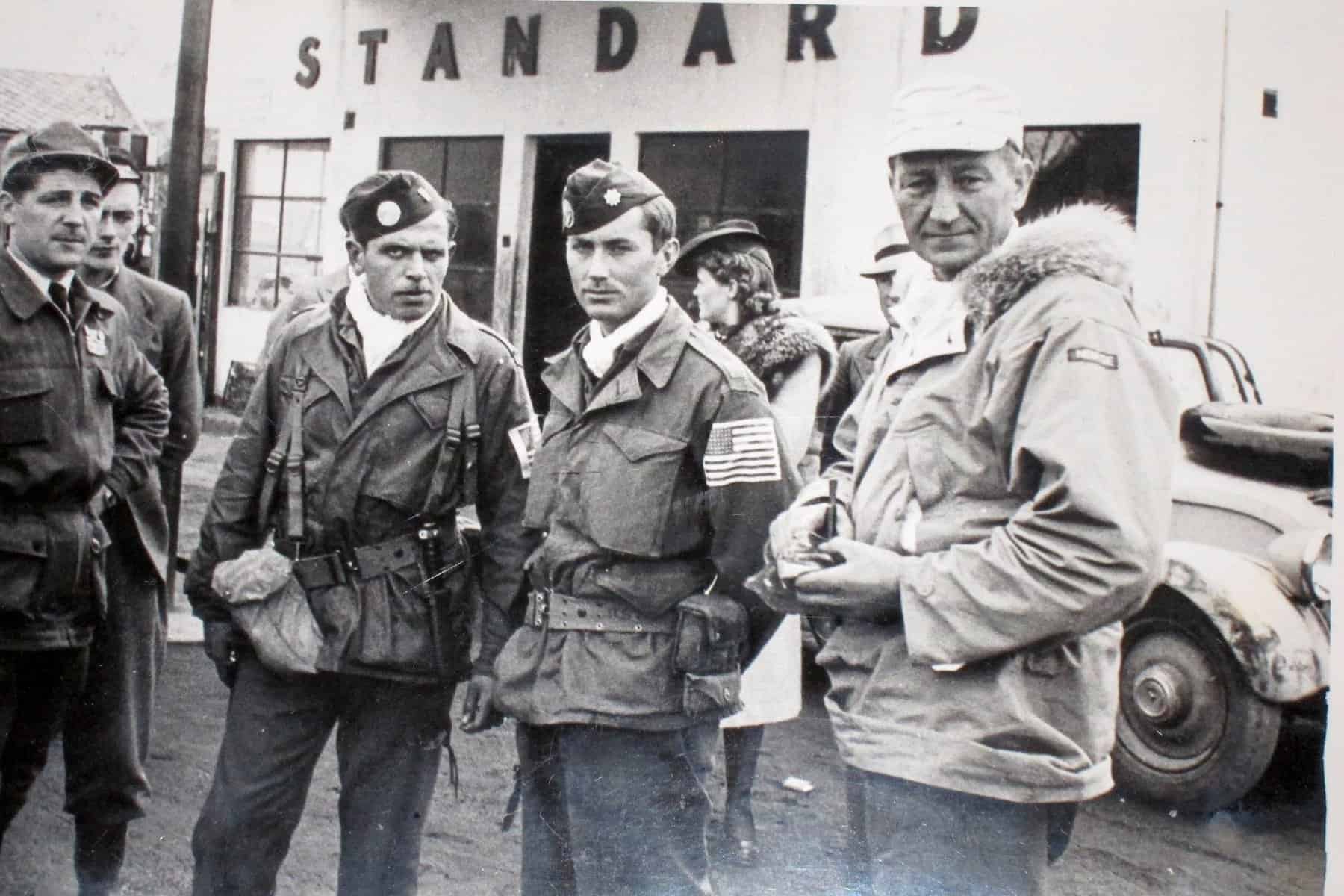Monuments
Norwegian-American WW2 Monument (99th Inf BN & OSS Norwegian Operational Group)
OSS Norso Group (Operation Rype) Memorial – Jorstadelva Bridge
OSS Headquarters (Gjefsjøen Fjellgård)- Operation Rype.

Former Director of the CIA who commanded the OSS Operational Group Norso I and II and lead the Operation Rype Mission in Norway in WW2.
William Colby was born on January 4, 1920 in St. Paul, Minnesota.
FROM FIND A GRAVE: United States Intelligence Service Officer. Born in St. Paul, Minnesota, the son of Elbridge Colby, an army officer and educator, and Margaret Mary Egan Colby, an ardent Catholic who guided her son in the path of that religion. His grandfather, Charles Colby, had been a professor of chemistry at Columbia University but had died prematurely. William Colby attended public high school in Burlington, Vermont, and then Princeton University, graduating in 1940 and entering Columbia Law School the following year. In 1941 William joined the U.S. Army and in 1943 the Office of Strategic Services (OSS).
The OSS trained him for special missions, and he served behind enemy lines in France and Norway. In an effort to prevent German troops from being redeployed through Norway to be used against advancing Allied forces in Germany, he led the raid to destroy the Tangen railroad bridge--a daring and spectacular success, though the bridge was soon rebuilt.
He married Barbara Heinzen in 1945 and they had five children. The Catholic Church played a "central role" in the family's life, with his two daughters receiving their first communion at St. Peter's Basilica. In 1984, he divorced Barbara and married Democratic diplomat Sally Shelton-Colby. He obtained a law degree from Columbia University in 1947, the same year that Congress approved the formation of the Central Intelligence Agency (CIA).
After working for a short time in a law firm, William joined the new agency. He served in Stockholm from 1951 to 1953 and then in Rome from 1953 to 1958, where he helped to arrange the secret subsidization of political parties to prevent communist electoral victories. Most of the recipients were centrist or slightly left of center, a political alignment that proved effective in combating communism but that gave William the reputation of having endorsed the "opening to the Left." William was CIA station chief in Saigon from 1959 to 1962 and headed the agency's Far East division from 1962 to 1967. Then from 1968 to 1971 he directed the Phoenix program in South Vietnam, which sought to identify and eliminate communist activists (the Viet Cong) at the village level. He felt that the program was superior to the use of military force, which he believed was too blunt an instrument and alienated the Vietnamese. Nevertheless, estimates of the number killed under Phoenix range as high as 60,000 people. William however put the number at 20,587. Phoenix has also been defended on relativist grounds--the Viet Cong assassinated nearly 40,000 of their enemies in the period from 1957 to 1972. But none of these arguments could prevent the program from becoming a focal point of the antiwar movement. Although William maintained that the deaths characteristically arose in combat and not as a result of cold-blooded murder, critics of Phoenix labeled it an assassination program and a crime against humanity.
William returned to Washington and became executive director of CIA. After long-time DCI Richard Helms was dismissed by President Nixon in 1973, James Schlesinger assumed the helm at the Agency. A strong believer in reform of the CIA and the intelligence community more broadly, Schlesinger had written a 1971 Bureau of the Budget report outlining his views on the subject. William, who had had a somewhat unorthodox career in the CIA focused on political action and counterinsurgency, agreed with Schlesinger's reformist approach. Schlesinger appointed him head of the clandestine branch in early 1973. When Nixon reshuffled his agency heads and made Schlesinger secretary of defense, William emerged as a natural candidate for DCI—apparently on the basis of the recommendation that he was a professional who would not make waves. He was known as a media-friendly CIA director. His tenure as DCI, which lasted two and a half tumultuous years, was overshadowed by the Church and Pike congressional investigations into alleged U.S. intelligence wrong doing over the preceding 25 years, including 1975, the so-called Year of Intelligence. William's life continued to be eventful. In 1978 he published his memoir, Honorable Men, in which he defended himself against the Left over Phoenix and against the Right over his decision to clear the air while director of the CIA. In 1982, following the enactment of stringent secrecy legislation in the administration of President Ronald Reagan, the U.S. government began proceedings against him for making unauthorized disclosures, in the French-language edition of his memoir, about American efforts to retrieve secret codes from a sunken Soviet submarine. His agreement to pay a $10,000 fine in an out-of-court settlement barely covered the cracks between William and his enemies on the Right. He had resumed legal practice and lectured widely, taking up a new cause--the campaign for a freeze on nuclear arms.
On a spring day in 1996, William went down to the waterfront near his weekend home in Rock Point, Maryland, and launched his canoe into a stiff breeze. William died in what appears to be a boating accident near his home in Rock Point, Maryland. There was speculation that his death was due to foul play or suicide. Until his body was found several days later with no evident signs of foul play, the fate of the man whose manner of death seemed to conjure up the enigma of his life. The Maryland state coroner, however, ruled that William had suffered either a heart attack or a stroke owing to a discernible plaque buildup in his arteries, and had fallen into the water and drowned. He was 76 years old.
